
Low Carbon Chinatown Digital Cookbook
低碳唐人街食谱
Click on the different buttons below to explore the various low carbon recipes developed by East and Southeast Asian (ESEA) communities in collaboration with a data scientist and special edition low carbon recipes developed in collaboration with celebrated ESEA chefs and food writers. Understand the carbon footprint impact of food through its processes from ingredients, cooking techniques to food sources. Experiment with cooking the dishes at home yourself while assessing the impact of your own cooking on the climate. The Low Carbon Chinatown Digital Cookbook is a digital companion piece to Low Carbon Chinatown, a project by Ling Tan.
Carbon Footprint Impact Of Food
食物的碳足迹影响
The data below shows the carbon footprint rankings of ingredients, food sources and cooking methods that are often used in popular Chinese dishes such as Chicken Rice, Sweet and Sour Pork and Wonton Dumpling Soup. Working with data scientist, Raphael Leung, the data were gathered to encourage participants involved in the Low Carbon Chinatown Workshops to think of inventive ways to reduce their meal’s carbon footprint. Click on the different buttons to explore the various carbon footprint information.
Carbon footprint data used here draws from several sources and is meant simply to provide a general understanding of relative impact.
Low Carbon Chicken Rice By MiMi Aye
低碳鸡饭
Low Carbon Chicken Rice
"Chicken thighs are a good choice, because they are basically a by-product of the more popular chicken breast which means less waste (they’re also cheaper for the same reason). Thighs also cook more evenly and quickly than whole chickens. Some of the ingredients can be home grown, e.g ginger and spring onions"
Servings | 多少份: 4 people
Taste | 味道: "It tastes exactly like the traditional dish! | 味道和传统菜一模一样!"
Recipe's Carbon Footprint Impact | 食谱的碳足迹影响
与传统食谱相比,每份的碳足迹:
Traditional Chicken Rice
Low Carbon Chicken Rice
Traditional Sweet & Sour Pork
Traditional Wonton Dumpling Soup
Low Carbon Sweet & Sour 'Pork'
Low Carbon Wonton Dumpling Soup
Traditional Salt & Pepper Prawns
Low Carbon Salt & Pepper Prawns
Example of a traditional chicken rice recipe - Link
Key Ingredients | 关键成分
8 small or 4 large chicken thighs (about 1 kg), with skin and bone




The reserved chicken trimmings
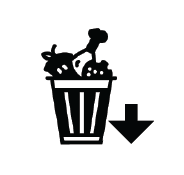



6 long red chillies, roughly chopped



22. 2 spring onions, whole, trimmed and finely chopped



Ingredients Or Steps That Might Incur Lower Carbon Footprint
可能导致较低碳足迹的成分或步骤

Made in UK
英国制造

Home Grown 自产自销 / Local Produce 本地产品/ Made in London 伦敦制造
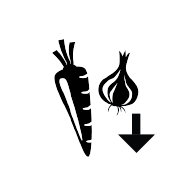
Original ingredient but reduced amount
原始成分但减少量

New Ingredient
新成分

Use Electricity
使用电器

New step with lower carbon footprint 能够降低碳足迹的步骤













– Food photography by Uyen Luu and styling by Sam Dixon –
Key Steps | 关键步骤











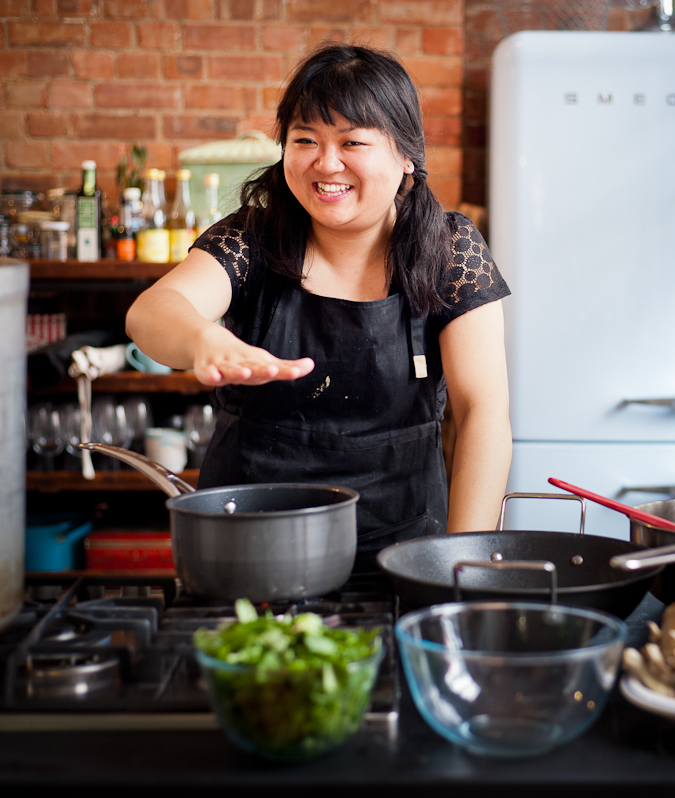
British-born to Burmese parents, chef and writer MiMi Aye is well-used to adapting recipes and dishes to give a taste of her motherland Myanmar (formerly Burma) using whatever techniques and ingredients are available. Her award-winning book ‘MANDALAY: Recipes & Tales from a Burmese Kitchen’ was chosen by The Observer, The Financial Times, The Mail on Sunday and Nigella Lawson as one of their Best Books of 2019. With bylines in TIME, The Guardian and The Independent.
Low Carbon Sweet & Sour Pork By Uyen Luu
低碳咕噜肉
Low Carbon Sweet & Sour Pork
"I will do cauliflower instead as pork has such a high foot print and usually when I make this, no one misses the pork."
Servings | 多少份: 2–4 people
Taste | 味道: "It tastes exactly like the traditional dish! | 味道和传统菜一模一样!"
Recipe's Carbon Footprint Impact | 食谱的碳足迹影响
与传统食谱相比,每份的碳足迹:
Traditional Chicken Rice
Low Carbon Chicken Rice
Traditional Sweet & Sour Pork
Traditional Wonton Dumpling Soup
Low Carbon Sweet & Sour 'Pork'
Low Carbon Wonton Dumpling Soup
Traditional Salt & Pepper Prawns
Low Carbon Salt & Pepper Prawns
Example of a traditional sweet & sour pork recipe - Link
Key Ingredients | 关键成分
1 tablespoon light soy sauce




2 tablespoons cider vinegar





2 free range eggs, beaten in a shallow bowl









2 spring onions (scallions), sliced
Ingredients Or Steps That Might Incur Lower Carbon Footprint
可能导致较低碳足迹的成分或步骤

Made in UK
英国制造

Home Grown 自产自销 / Local Produce 本地产品/ Made in London 伦敦制造

Original ingredient but reduced amount
原始成分但减少量

New Ingredient
新成分

Use Electricity
使用电器

New step with lower carbon footprint 能够降低碳足迹的步骤













– Food photography by Uyen Luu and styling by Sam Dixon –
Key Steps | 关键步骤




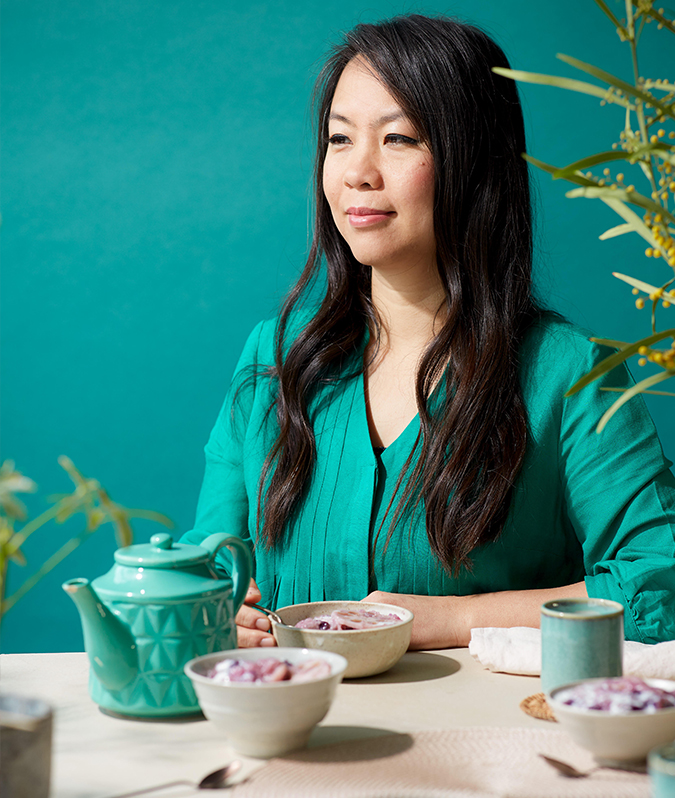
Uyen Luu is a Vietnamese food writer, photographer and author of `Vietnamese: Simple Vietnamese Food To Cook At Home” (published by Hardie Grant) and “My Vietnamese Kitchen”. Uyen is also a food photographer.
Low Carbon Wonton Dumpling Soup by Shu Han Lee
低碳馄饨汤
Low Carbon Wonton Dumpling Soup
"Instead of usual pork and prawn, we use a vegan filling of tofu, leek and carrot. Tofu’s a super versatile ingredient and takes on flavour like a sponge. Leek, when stir fried first, gives us savoury depth and aroma. Carrot gives us the sweetness and colour you would normally get from prawns. We also use UK made wonton wrappers rather than imported wrappers."
Servings | 多少份: 8 (assuming 5 wontons each!)
Taste | 味道: "It tastes exactly like the traditional dish! | 味道和传统菜一模一样!"
Recipe's Carbon Footprint Impact | 食谱的碳足迹影响
与传统食谱相比,每份的碳足迹:
Traditional Chicken Rice
Low Carbon Chicken Rice
Traditional Sweet & Sour Pork
Traditional Wonton Dumpling Soup
Low Carbon Sweet & Sour 'Pork'
Low Carbon Wonton Dumpling Soup
Traditional Salt & Pepper Prawns
Low Carbon Salt & Pepper Prawns
Example of a traditional wonton dumpling soup recipe - Link
Key Ingredients | 关键成分

200g block of firm tofu






1 L chicken stock (homemade, or use 2 Knorr stock pots and 1L water)

Ingredients Or Steps That Might Incur Lower Carbon Footprint
可能导致较低碳足迹的成分或步骤

Made in UK
英国制造

Home Grown 自产自销 / Local Produce 本地产品/ Made in London 伦敦制造

Original ingredient but reduced amount
原始成分但减少量

New Ingredient
新成分

Use Electricity
使用电器

New step with lower carbon footprint 能够降低碳足迹的步骤













– Food photography by Uyen Luu and styling by Sam Dixon –
Key Steps | 关键步骤





Shu Han is Hokkien Chinese in heritage, born and raised in food-obsessed Singapore. She moved to the UK twelve years ago and found herself missing the flavours of home. That was the start of her food journey, as she learnt to cook the food she grew up with, often using British seasonal ingredients. Shu has since written a cookbook 'Chicken & Rice: Southeast Asian Recipes from a London Kitchen' (Fig Tree, Penguin Books) and founded @rempapaspiceco, bringing Southeast Asian spice pastes to home kitchens everywhere.
LOW CARBON SALT & PEPPER 'PRAWN' By Leeds Community Members
低碳椒盐虾
Four short cooking-documentary films were developed as part of a Low Carbon Chinatown residency carried out in Leeds (UK) in 2023. The films follow 4 Leeds residents, a 79-year-old immigrant from Hong Kong, a 41-year-old immigrant from China, a 25-year-old university student from China, and a 18-year-old high school student from Hong Kong into their own home environments, where they each cook their own version of a low carbon Salt and Pepper ‘Prawns’ dish in their own kitchen, and talk about their experience living in the UK and their relationship to climate change. The films invite the audience to examine how different age, background, heritage, and life experience affects the way people cook food at home and in tackling the climate crisis.
Low Carbon Salt & Pepper Prawns by Bei Gao
低碳椒盐虾
Low Carbon Salt & Pepper Prawns
Servings | 多少份: 3
Recipe's Carbon Footprint Impact | 食谱的碳足迹影响
与传统食谱相比,每份的碳足迹:
Traditional Chicken Rice
Low Carbon Chicken Rice
Traditional Sweet & Sour Pork
Traditional Wonton Dumpling Soup
Low Carbon Sweet & Sour 'Pork'
Low Carbon Wonton Dumpling Soup
Traditional Salt & Pepper Prawns
Low Carbon Salt & Pepper Prawns
Example of a traditional salt and pepper prawns - Link
Key Ingredients | 关键成分








Ingredients Or Steps That Might Incur Lower Carbon Footprint
可能导致较低碳足迹的成分或步骤

Made in UK
英国制造

Home Grown 自产自销 / Local Produce 本地产品/ Made in London 伦敦制造

Original ingredient but reduced amount
原始成分但减少量

New Ingredient
新成分

Use Electricity
使用电器

New step with lower carbon footprint 能够降低碳足迹的步骤









– Photography by Rachel Bunce –
Key Steps | 关键步骤







Bei Gao is an active Community Leader with over 7 years of experience within local charities working with new arrivals and settled communities, and over 10 years within the legal sector. She works with adults and children from diverse backgrounds, and regularly organizes cultural events and projects. She loves artistic performances and leads activities within Mafwa Theatre and in the wider community. Bei engages with people through art, language, and culture to promote togetherness.
Low Carbon Salt & Pepper Prawns by Man Chiu Leong
低碳椒盐虾
Low Carbon Salt & Pepper Prawns
Servings | 多少份: 2
Recipe's Carbon Footprint Impact | 食谱的碳足迹影响
与传统食谱相比,每份的碳足迹:
Traditional Chicken Rice
Low Carbon Chicken Rice
Traditional Sweet & Sour Pork
Traditional Wonton Dumpling Soup
Low Carbon Sweet & Sour 'Pork'
Low Carbon Wonton Dumpling Soup
Traditional Salt & Pepper Prawns
Low Carbon Salt & Pepper Prawns
Example of a traditional salt and pepper prawns - Link
Key Ingredients | 关键成分









Ingredients Or Steps That Might Incur Lower Carbon Footprint
可能导致较低碳足迹的成分或步骤

Made in UK
英国制造

Home Grown 自产自销 / Local Produce 本地产品/ Made in London 伦敦制造

Original ingredient but reduced amount
原始成分但减少量

New Ingredient
新成分

Use Electricity
使用电器

New step with lower carbon footprint 能够降低碳足迹的步骤








– Photography by Rachel Bunce –
Key Steps | 关键步骤



Mr Man Chiu Leong is a 79 year-old retiree living in Leeds for many decades. A first-generation immigrant from Hong Kong, he has worked across textile, manufacturing, food hygience and many other sectors in the UK. He is now an active member of the Leeds Chinese community, having founded Lychee Red Chinese Seniors and is also working as a community chef among many other hobbies.
Low Carbon Salt & Pepper Prawns by HaoJin Wang
低碳椒盐虾
Low Carbon Salt & Pepper Prawns
"Salt and Pepper Mushroom is a common dish found in my hometown in northern China. Sometimes compare with meat, we would prefer to order this dish in restaurant as it taste like meat and it contains many vitamins."
Servings | 多少份: 2
Taste | 味道: "This dish still taste like meat and contains many vitamins."
Recipe's Carbon Footprint Impact | 食谱的碳足迹影响
与传统食谱相比,每份的碳足迹:
Traditional Chicken Rice
Low Carbon Chicken Rice
Traditional Sweet & Sour Pork
Traditional Wonton Dumpling Soup
Low Carbon Sweet & Sour 'Pork'
Low Carbon Wonton Dumpling Soup
Traditional Salt & Pepper Prawns
Low Carbon Salt & Pepper Prawns
Example of a traditional salt and pepper prawns - Link
Key Ingredients | 关键成分








Ingredients Or Steps That Might Incur Lower Carbon Footprint
可能导致较低碳足迹的成分或步骤

Made in UK
英国制造

Home Grown 自产自销 / Local Produce 本地产品/ Made in London 伦敦制造

Original ingredient but reduced amount
原始成分但减少量

New Ingredient
新成分

Use Electricity
使用电器

New step with lower carbon footprint 能够降低碳足迹的步骤







– Photography by Rachel Bunce –
Key Steps | 关键步骤



Haojin Wang is one of the participants from Low Carbon Chinatown Residency in Leeds. She is originally from ShanXi province Xi'An City in China, and came to study at the University of Leeds a few years ago, encouraged by her peers from China.
Low Carbon Salt & Pepper Prawns by Stephen Wong
低碳椒盐虾
Low Carbon Salt & Pepper Prawns
Servings | 多少份:"Varies between number but with an 9 inch pan it can feed up to 4 people"
Taste | 味道: "I would rate my dish 8 out of 10, it still got room for improvement, but overall, I still enjoy it, I would cook it again!"
Recipe's Carbon Footprint Impact | 食谱的碳足迹影响
与传统食谱相比,每份的碳足迹:
Traditional Chicken Rice
Low Carbon Chicken Rice
Traditional Sweet & Sour Pork
Traditional Wonton Dumpling Soup
Low Carbon Sweet & Sour 'Pork'
Low Carbon Wonton Dumpling Soup
Traditional Salt & Pepper Prawns
Low Carbon Salt & Pepper Prawns
Example of a traditional salt and pepper prawns - Link
Ingredients Or Steps That Might Incur Lower Carbon Footprint
可能导致较低碳足迹的成分或步骤

Made in UK
英国制造

Home Grown 自产自销 / Local Produce 本地产品/ Made in London 伦敦制造

Original ingredient but reduced amount
原始成分但减少量

New Ingredient
新成分

Use Electricity
使用电器

New step with lower carbon footprint 能够降低碳足迹的步骤





– Photography by Rachel Bunce –
Key Ingredients | 关键成分



Key Steps | 关键步骤


Stephen Wong is a young college student who moved from Hong Kong to the UK with his family 3 years ago and currently lives in Leeds near his boarding school. He used to be part of the Youth Climate Action group in Leeds.

Low Carbon Chinatown is a project by Ling Tan and produced by Kakilang. The low carbon Pop-Up Structure is designed by Ling Tan and Usman Haque, supported by structural engineers Atelier One, fabricated by Gary Campbell and production managed by Nick Murray. The Low Carbon Salt & Pepper Prawns dish was developed in a residency supported by Compass Live Art.
Data scientist: Raphael Leung
Food writers: MiMi Aye, Uyen Luu and Shu Han Lee
Community partners: London Chinese Community Centre, Hackney Chinese Community Centre, Newham Chinese Association, Lychee Red Chinese Seniors, Mafwa Theatre & Lincoln Greeners
Film participants: Man Chiu Leong, Bei Gao, Haojin Wang & Stephen Wong

 1 portion of beef fillet steak | 牛肉 (90g)
1 portion of beef fillet steak | 牛肉 (90g)  1 portion of lamb meat | 羊肉(90g)
1 portion of lamb meat | 羊肉(90g) 1 portion of prawns, frozen | 冷冻虾(90g)
1 portion of prawns, frozen | 冷冻虾(90g) 1 portion of salmon fillet, frozen | 冷冻鲑鱼 (140g)
1 portion of salmon fillet, frozen | 冷冻鲑鱼 (140g) 1 portion of pork chops | 猪排 (90g)
1 portion of pork chops | 猪排 (90g) 1 portion of duck |鸭肉 (90g)
1 portion of duck |鸭肉 (90g) 1 portion of chicken |鸡肉 (90g)
1 portion of chicken |鸡肉 (90g) 1 portion of tofu | 豆腐 (100g)
1 portion of tofu | 豆腐 (100g)  1 portion of tomatoes | 番茄 (80g)
1 portion of tomatoes | 番茄 (80g)  1 portion of bamboo shoots | 竹笋 (80g)
1 portion of bamboo shoots | 竹笋 (80g) 1 portion of mushrooms | 蘑菇(80g)
1 portion of mushrooms | 蘑菇(80g) 1 portion of carrots | 萝卜(80g)
1 portion of carrots | 萝卜(80g) 1 portion of onions | 洋葱(80g)
1 portion of onions | 洋葱(80g) 1 portion of cabbage | 卷心菜 (80g)
1 portion of cabbage | 卷心菜 (80g) 1 portion of cauliflower | 菜花 (80g)
1 portion of cauliflower | 菜花 (80g)  1 portion of cooked white rice | 未煮过的白米饭 (200g)
1 portion of cooked white rice | 未煮过的白米饭 (200g)  1 portion of boiled potato | 煮土豆 (120g)
1 portion of boiled potato | 煮土豆 (120g) 1 portion of uncooked wheat flour | 面粉 (120g)
1 portion of uncooked wheat flour | 面粉 (120g) 1 portion of uncooked Egg Noodles | 生鸡蛋面 (50g)
1 portion of uncooked Egg Noodles | 生鸡蛋面 (50g) 1 portion of steamed plain bun | 蒸馒头 (50g)
1 portion of steamed plain bun | 蒸馒头 (50g)  1 teaspoon (4.2g) of palm oil
1 teaspoon (4.2g) of palm oil  1 teaspoon (4.2g) of olive oil
1 teaspoon (4.2g) of olive oil 1 teaspoon (4.2g) of sunflower oil
1 teaspoon (4.2g) of sunflower oil 1 teaspoon (4.2g) of soy sauce
1 teaspoon (4.2g) of soy sauce  1 teaspoon (4.2g) of sugar
1 teaspoon (4.2g) of sugar  Buying from Chain Supermarket (e.g Sainsbury) | 從連鎖超市購買(例如 Sainsbury)
Buying from Chain Supermarket (e.g Sainsbury) | 從連鎖超市購買(例如 Sainsbury) Buying From Your Local Grocer | 從您當地的雜貨店購買
Buying From Your Local Grocer | 從您當地的雜貨店購買 Buying Online From Dedicated Online Supermarket (e.g Ocado) | 從專門的在線超市在線購買(例如 Ocado)
Buying Online From Dedicated Online Supermarket (e.g Ocado) | 從專門的在線超市在線購買(例如 Ocado)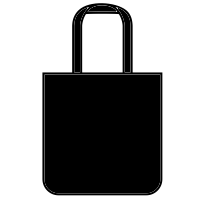 Buying A Tote Bag to Carry Groceries | 買一個手提袋來攜帶雜貨
Buying A Tote Bag to Carry Groceries | 買一個手提袋來攜帶雜貨 Re-using Plastic Bags From Home to Carry Groceries | 重複使用家裡的塑料袋來攜帶雜貨
Re-using Plastic Bags From Home to Carry Groceries | 重複使用家裡的塑料袋來攜帶雜貨  55 min of roasting or baking in the oven
55 min of roasting or baking in the oven  41 min of broiling or grilling in the oven
41 min of broiling or grilling in the oven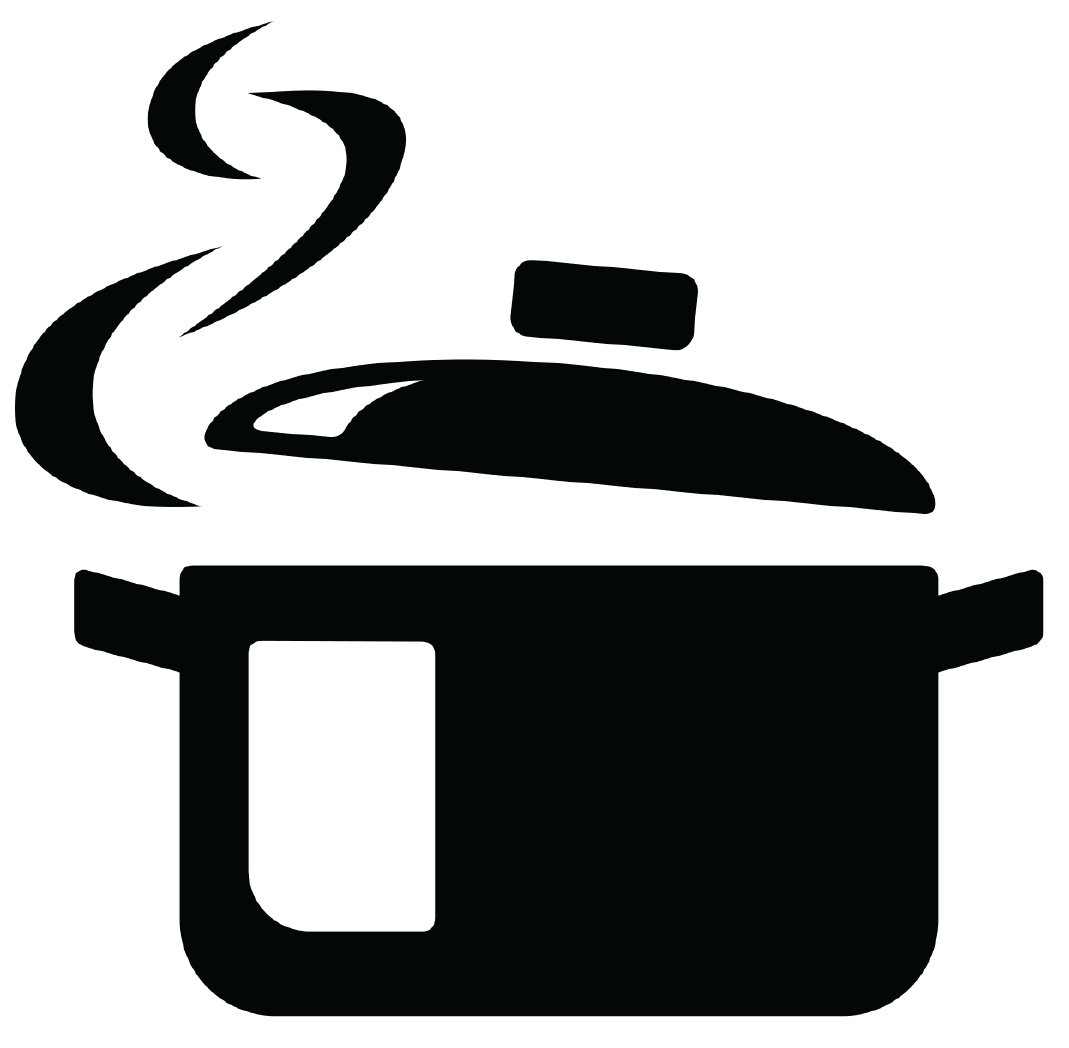 45 min of boiling on the stove
45 min of boiling on the stove 40 min of steaming (gas hob)
40 min of steaming (gas hob) 34 min of deep frying (gas hob)
34 min of deep frying (gas hob) 20 min of shallow frying on stove
20 min of shallow frying on stove 52 min in a slow cooker
52 min in a slow cooker  20 min of pressure cooker (gas hob)
20 min of pressure cooker (gas hob)  5 min of microwave
5 min of microwave